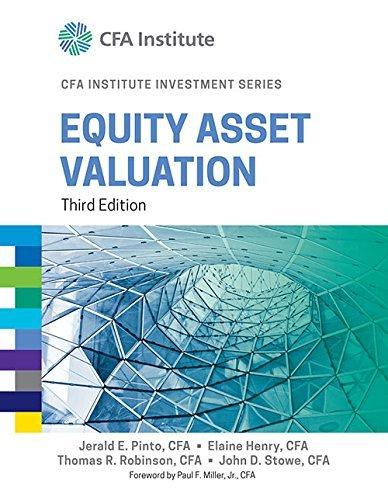One of the main drivers of P/E for the market as a whole is the level of
Question:
One of the main drivers of P/E for the market as a whole is the level of interest rates.
The inverse relationship between value and interest rates can be seen from the expression of P/E in terms of fundamentals, because the risk-free rate is one component of the required rate of return that is inversely related to value. The Fed Model relates the earnings yield on the S&P 500 to the yield to maturity on 10-year US Treasury bonds.
As we have defined it, the earnings yield (E/P) is the inverse of the P/E; the Fed Model uses expected earnings for the next 12 months in calculating the ratio.
Based on the premise that the two yields should be closely linked, on average, the trading rule based on the Fed Model considers the stock market to be overvalued when the market’s current earnings yield is less than the 10-year Treasury bond (T-bond) yield.
The intuition is that when risk-free T-bonds offer a yield that is higher than stocks—
which are a riskier investment—stocks are an unattractive investment.
According to the model, the justified or fair-value P/E for the S&P 500 is the reciprocal of the 10-year T-bond yield. As of 11 September 2013, according to the model, with a 10-year T-bond yielding 2.93 percent, the justified P/E on the S&P 500 was 1/0.0293 = 34.1. The forward P/E based on 2014 reported earnings estimates for the S&P 500 as of same date was 16.1.
Step by Step Answer:






